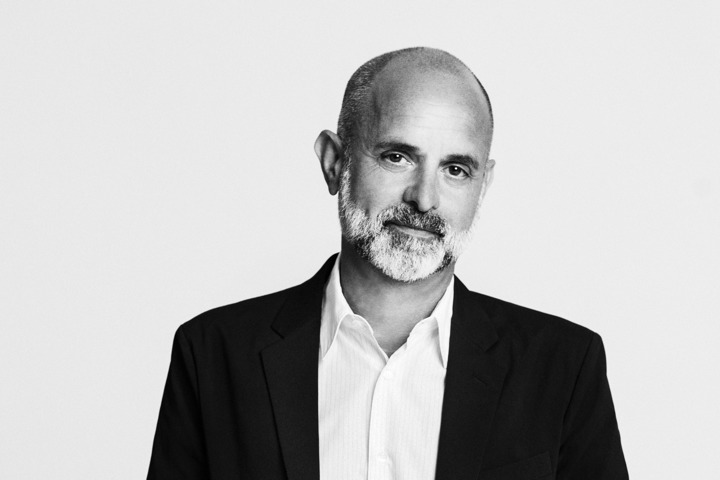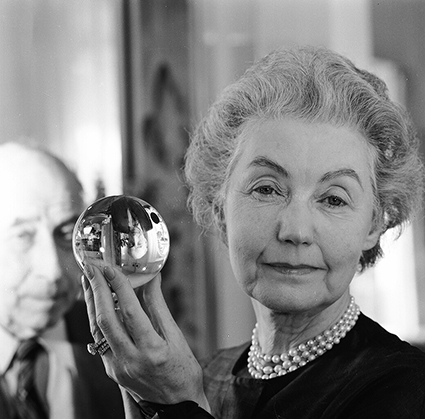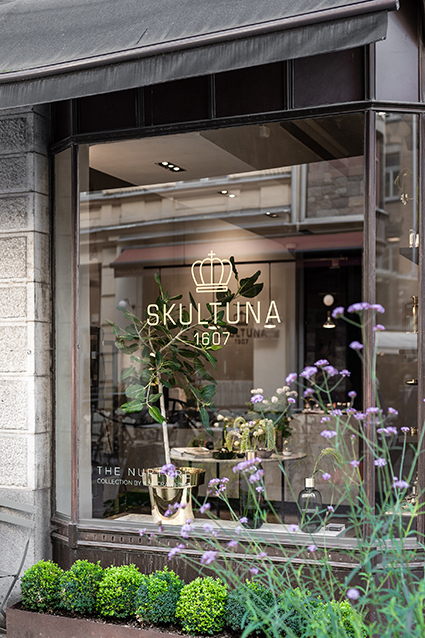
Quality design will live forever
14 May 2020
Famous for the combination of sleek simplicity and exquisite elegance, Swedish design has a unique reputation within the global design scene. Well-renowned interior design businesses, such as SCC members Skultuna and Svenskt Tenn, are greatly influenced by their century-long Swedish heritage. In this feature Ofelia Klerk Kurpatow, International Sales and Retail Establishment at Skultuna Messingsbruk, and Thommy Bindefeld, Marketing and Creative Director at Svenskt Tenn, elaborate on the fundamentals behind two of Sweden’s most successful design legacies of all time.
The poor man’s gold
Founded in the little Swedish town of Skultuna in 1607 by His Majesty King Charles IX, Skultuna has decorated Swedish homes with ornaments made of brass – historically known as ‘the poor man’s gold – for more than four centuries. “Brass is known as the ‘poor man’s gold’, which is very befitting to the egalitarian values that Sweden holds,” says Ofelia. Aiming to boost the Swedish national economy, the original factory in Skultuna – where it remains today – initially focused on the production of chandeliers and candleholders for the Crown and Church. As a matter of fact, some of the earliest design creations include chandeliers dating back to the 17th century, which can still be found in churches across the country. A vital factor behind Skultuna’s continuous success is its ability to translate long-standing knowledge and traditions into modern design. “Skultuna’s motto is ‘one part traditional craftsmanship and one part modernity’, meaning the willingness to adapt to modern influences, whilst benefiting from well-established historical knowledge.”
Female entrepreneurship
Estrid Ericson was a young and unmarried arts teacher when she founded Svenskt Tenn in Stockholm in 1924, just a few years after Swedish women were given the right to vote in 1919. “She was definitely at the forefront of women’s liberation, as a strong and independent businesswoman at the time,” says Thommy. Interestingly, she carried out groundbreaking marketing efforts way ahead of her time: “Estrid Ericson did not work with advertisements. Instead, she worked with what we today call PR, before it was even a word.” For instance, the 20th century businesswoman invited prominent guests – such as well-renowned journalists and influencers of the time – for dinners, in order to showcase Svenskt Tenn products in pleasant table settings. Her enterprising mindset continuously inspires business in modern times: “Estrid Ericson is a great source of inspiration to how Svenskt Tenn works today. We regularly examine our archives, to find what she did and try to do it in a contemporary way.”

Ofelia Klerk Kurpatow, International Sales and Retail
Establishment at Skultuna Messingsbruk. Photo: Private.
The power of functionality
Functionalism – the design theory stating that practical design inherently is beautiful – has played a vital role in forming Swedish design language throughout history. Functionalism culminated in the wake of The General Art and Industrial Exposition of Stockholm in 1897, in which Skultuna was a major exhibitor with objects designed by Hjalmar Nordström – the father of Swedish modern design. Also, the exposition took place just a few decades before the establishment of Svenskt Tenn. “For Swedes, the functionality really is as important as the beauty of an object. This trend is much larger in Sweden than in other European countries,” says Thommy. In the main, the cold weather in the Nordic countries implies a demand for a functional yet delightful home, in which one can spend life and celebrate traditions throughout the year. “Because of the climate in the Scandinavian countries, it is important for us to have a beautiful home. This has affected the way that we are developing our interior design.” Likewise, Ofelia appoints functionality as an essential factor to success – today and in the future: “Looking ahead, the functionality of Swedish products will remain important. It will always work and bring the industry into the future.”
Everlasting quality and design
As a supplier of premium goods with a timeless design, Skultuna bridges the gap between the past, the presence and the future. The idea is to manufacture products that not only will last for a lifetime, but for many generations to come. “That the next generation can inherit products and give them to the next generation as well, speaks to the core of what sustainable design should be,” says Ofelia. Similarly, the classical design of Skultuna is equally appropriate through all stages of life; for young people wanting to purchase a housewarming gift as well as for a grandparent seeking to pass down an heirloom to the next generation. Principally, brass as a choice of material plays a vital role in the unique durability of Skultuna’s products: “The material itself has just become an incorporated part of our company and thus in our core values of sustainable thinking in home decor. Brass equals everlasting quality and design,” says Ofelia. Likewise, the Swedish Auction House has a specific department for furniture from Svenskt Tenn. Thommy explains: “That shows that there is a unique longevity of our products, that can be inherited for generations. I believe that is the sustainable way of producing products."
Royal heritage
By having been official purveyors to the Swedish Royal Court throughout history, both Skultuna and Svenskt Tenn have a unique tie to the Swedish royal heritage. Upon being appointed this honorary mission in 1928, it was perceivably an evidence for the status of Svenskt Tenn. According to Thommy, the royal ties are identically important at the present: “Today it is a proof that the company is well kept and that Svenskt Tenn is an important place for Swedish design. I think and hope that it will stay this way in the future.” In like manner, the honorary task is of great importance to Skultuna. “To be a royal purveyor means that we need to uphold a certain standard in quality and design,” says Ofelia. In addition, Skultuna recently launched a series of tea light holders called ‘Infinity Series’ in collaboration with Prince Carl Philip of Sweden. Ofelia continues: “The pride to carry the legacy of this old company into the 21st century speaks to our corporate identity. We are proud to continually represent the royal family.” According to Ofelia, the royal heritage can be used as a unique selling point in marketing efforts overseas, such as in the United Kingdom: “The connection to the Swedish royal heritage is definitely intriguing to many Brits somehow and appears to be highly appreciated within the UK society."
With humanity at heart
An integral part of Svenskt Tenn’s corporate identity is its strong connection to humanitarian values, which is directly rooted in its history. Josef Frank, a celebrated architect and designer of Jewish ancestry, fled from Austria in the 1930s due to the rising anti-Semitism. Upon his arrival in Sweden, he experienced difficulties entering the Swedish architecture scene. In the beginning of 1934, Estrid Ericson provided Josef Frank a platform to work as a designer for Svenskt Tenn; resulting in some 80% of Svenskt Tenn’s well-renowned patterns. Eventually, Josef Frank’s colourful Middle-European design language made him one of the most iconic and impactful Swedish designers of all time. Thommy describes: “Josef Frank introduced a completely new way of working with colours, prints and a humanistic approach. Everything that he did challenged the status quo in Swedish design.” For Frank, putting humanity and feelings in the centre of attention was crucial, whilst engaging in a colourful, joyful and bold style of design. “Svenskt Tenn is characterised by a very colourful and joyful way of doing design. Also, it has an aesthetic that is much more human and bold than the typical Swedish design.”

Estrid Ericson, Founder of Svenskt Tenn, with celebrated
designer Josef Frank. Photo: Lennart Nilsson.
The heartfelt story has inspired Svenskt Tenn’s humanistic approach in modern times: “Estrid Ericson has inspired us today to look at how we also can be humanists and open up in our time,” says Thommy. In 2016, the Svenskt Tenn Furnishings Studio began providing migrants a platform to work with needlecraft, while concurrently being supported to learn Swedish during work hours. “This is an integration project aimed at giving newly arrived Swedes, with a background of working as craftsmen, a platform to establish themselves in society.”
Ensuring longevity of the brand
Moreover, a vital chapter in the history of Svenskt Tenn, was when Estrid Ericson sold the company to the Kjell and Märta Beijer Foundation in 1975. The mission of the foundation is to secure the brand and the heritage for all foreseeable future. “By being owned by the foundation, we can promise that Svenskt Tenn will live forever. It is our task to move Svenskt Tenn into the future and to preserve the concept and aesthetics of the company in a long term perspective,” says Thommy. Interestingly enough, the Kjell and Märta Beijer Foundation reinvests its entire profit margins into research in life sciences and healthcare at leading research and academic institutions in Sweden. For instance, the foundation supports research projects in Agricultural Studies at Uppsala University, Biomedicine and Pharmaceutics at Karolinska Institutet, as well as studies in Economy and Ecology at the Royal Academy of Science at the Beijer Institute in Stockholm. According to Thommy, the foundation’s investments in research results in both an internal and external pride: “Internally, we are super proud of working for a business that supports the future in research. Externally, I believe that our customers are proud of supporting a business that contributes to a good cause. We support and secure both craftsmanship and humanity; we are a part of the future in that way.”
Future opportunities
Skultuna has an ambitious agenda for its future development and expansion across the globe. According to Ofelia, the simplistic yet elegant style of Skultuna’s delicate brass details translates well all over the world. “Brass brings an amazing warmth and juxtaposes nicely with anyone’s home. It can add luminosity to everything from traditional interior to lighter minimalistic homes.” In order to expand effectively, Skultuna focuses greatly on developing a clear digital strategy for its online store. “An important aspect of what brings us into the future is our strong web presence and our focus on marketing and media. We have a very strong webshop, which is aligned with how the retail industry is developing.” Furthermore, Skultuna is eager to inaugurate a physical flagship store in central London in the near future. “As a bustling metropolitan, London is an amazing city to open a store in. I think that there is definitely great potential in the UK, since there is an increased interest in interior design here. It will be very exciting to show the British market Skultuna’s mix of a deeprooted heritage with modern and innovative design,” Ofelia concludes.
Skultuna Concept Store at Grev Turegatan 18 in central Stockholm.
Photo: Skultuna.
BY: SARA APÉRIA
Join our mailing list
and keep up-to-date with the Chamber's news and events.
Read our Privacy Policy here